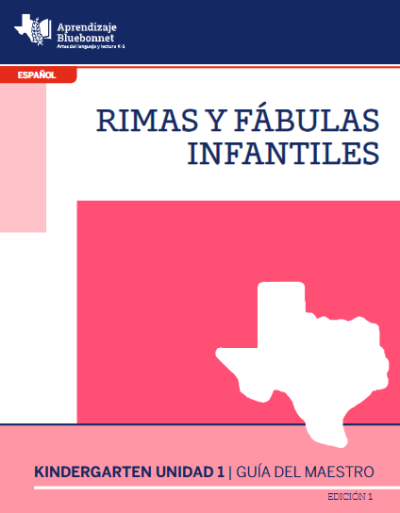Evaluation for 5.C.1d
Materials include a variety of activities and/or resources (including the use of memory building strategies) in Spanish for students to develop, practice, and reinforce (through cumulative review) alphabet knowledge both in isolation and in the context of meaningful print. (PR 2.A & 2.A.3) (S)
The materials include various activities and/or resources in Spanish for students to develop, practice, and reinforce alphabet knowledge in isolation. For instance, in Unit 3, Lesson 1, students begin by reviewing previously taught letters and sounds from Unit 2, such as upper- and lowercase m, p, s, o, a, i, e, and u and their corresponding sounds: /m/, /p/, /s/, /o/, /a/, /i/, /e/, /u/. To reinforce this knowledge in context, students play a syllable segmentation game using words such as oso, mesa, sapo, and mapa. The materials include various activities and/or resources in Spanish for developing, practicing, and reinforcing alphabet knowledge in the context of meaningful print as well. In the Destrezas fundamentales: Guía del maestro, Unit 4, Lesson 2, students trace and name upper- and lowercase letter b using "Tarjetas grandes de letras" and complete two Cuaderno de actividades pages, using red and blue crayons to differentiate between uppercase and lowercase letters. Students also identify upper- and lowercase b words during a shared reading of Libro grande Benita en la isla, blending syllables with motions and reinforcing vocabulary such as Benita, bota, and burro with visual aids. The materials include various Spanish activities and/or resources for students to develop, practice, and reinforce alphabet knowledge in isolation and in the context of meaningful print. For example, in Unit 4, Lesson 13 of the Destrezas fundamentales: Guía del maestro, students practice alphabet knowledge in isolation by identifying and pronouncing sounds during the activity "El tesoro de los sonidos," using "Tarjetas grandes de letras" and "Tarjetas grandes de sílabas" such as v, r, t, f, and ca, co, cu. They trace the letters ñ and Ñ with step-by-step verbal cues and visual models, and segment words such as niña and araña into syllables during oral routines. The materials include alphabet knowledge in context through the shared reading of the Benita en la isla chapter "La piña," during which students identify words with ñ and a writing extension.



